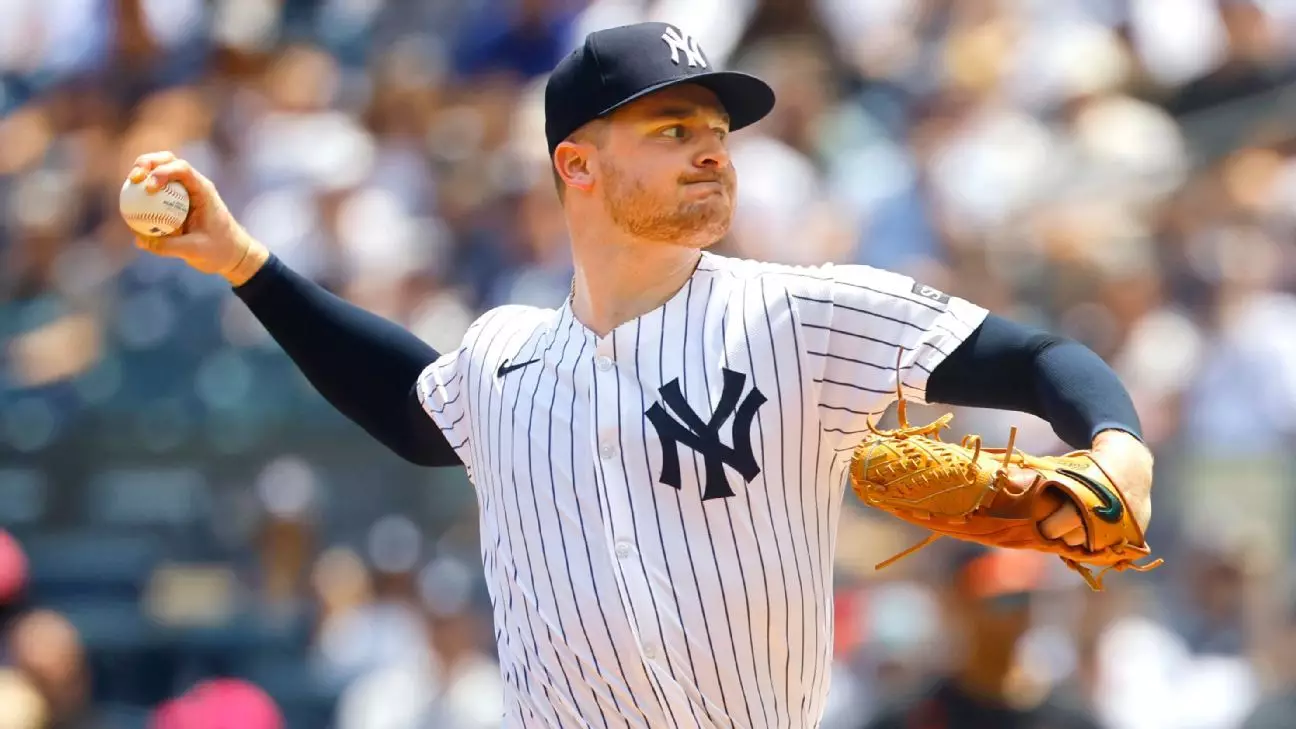The recent announcement regarding Clarke Schmidt’s injury represents much more than a setback; it signals a troubling trend within the New York Yankees’ pitching staff. Schmidt, once hailed as one of the team’s emerging talents, now faces the harrowing prospect of yet another Tommy John surgery. His preliminary diagnosis underscores how fragile even the brightest prospects can be in Major League Baseball, especially when their careers are marred with injuries. What initially appeared as a minor discomfort evolved into devastating news, illustrating the unpredictable and often cruel nature of pitching injuries.
Schmidt’s trajectory was promising this season—posting a solid 3.32 ERA across 14 starts, reflecting his growing confidence and mastery on the mound. Yet, his decline into injury exposes a harsh reality: talent alone cannot shield a pitcher from the physical toll of the sport. Especially in a league where pitching is paramount, such injuries chip away not only at a player’s career but also at the team’s strategic depth and postseason aspirations. The knowledge that he will likely be sidelined for most, if not all, next season should raise alarm bells for the Yankees and their fanbase, both questioning the longevity of their investment in young pitchers.
The Impact of Repeated Injuries on Team Morale and Strategy
Losing Schmidt is emblematic of a broader systemic issue—an already battered rotation struggling to find stability. The Yankees have not only lost Schmidt but also their ace Gerrit Cole, who underwent Tommy John surgery in March. The injury toll is staggering, with key contributors like Luis Gil and Ryan Yarbrough sidelined, leaving gaps that threaten to cripple the team’s competitiveness. Such a string of injuries reveals a fragile rotation—one that is increasingly reliant on veteran stopgaps and prospects to fill the void.
Moreover, this pattern exposes the Yankees’ vulnerability in rotation depth management. Relying on internal options like Carlos Carrasco and Allan Winans is a gamble, especially when they are unproven in pivotal moments. The promotion of young prospects such as Cam Schlittler provides hope, but it also underscores that the team is forced into an emergency mode, scrambling for solutions amid a season that demands consistency and resilience.
The psychological toll on the team cannot be understated. Injuries like Schmidt’s diminish confidence among pitchers and coaching staff, forcing a defensive mindset rather than proactive development. The sense of instability ripples throughout the clubhouse, impacting focus, morale, and ultimately, the team’s pursuit of postseason glory. The Yankees are at a crossroads, where their long-term strategy must evolve to prioritize health and injury prevention—an area where they have glaring room for improvement.
Strategic Reckoning and the Path Forward
The upcoming trade deadline looms as a critical juncture for the Yankees. The current rotation, depleted and uncertain, desperately needs reinforcement. While internal options may fill some gaps temporarily, they lack the pedigree and consistency necessary for a postseason push. The Yankees will likely explore aggressive trades, potentially targeting experienced starters who can provide immediate stability and leadership—a vital commodity in playoff runs.
Yet, this reactive approach also prompts a philosophical debate: Is the team investing enough in injury prevention and player development to ensure sustainability? The recurring wave of injuries suggests systemic issues—perhaps in training, workload management, or medical protocols—that need reevaluation. The team’s front office must face these questions head-on if they wish to avoid repeating this cycle.
In the broader context, Schmidt’s injury amplifies the urgent need for the Yankees to rethink their approach to pitching talent—balancing aggressive development with safeguarding their pitchers’ arms. It calls into question whether the current ecosystem fosters sustainable careers or inadvertently sets players up for recurrent setbacks. With no immediate cure for such injuries, the focus should shift toward long-term health management, a culture that prioritizes durability over raw velocity.
This injury narrative isn’t just about Schmidt; it’s a reflection of a larger challenge faced by all elite teams: how to maintain a resilient, reliable pitching staff amid the physical grind of Major League Baseball. For the Yankees, the road to recovery isn’t just about returning Schmidt to the mound—it’s about transforming their entire strategy to ensure their pitchers can thrive, not just survive, under the relentless pressure of the big leagues.

